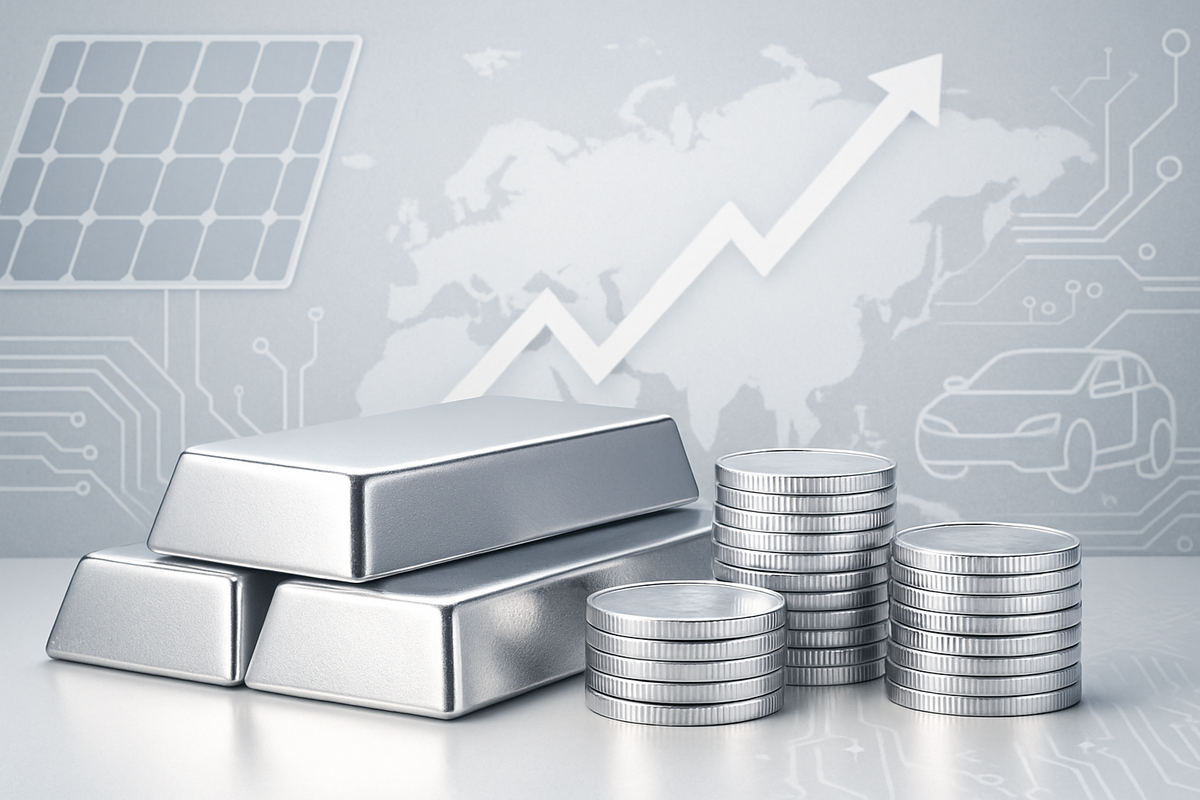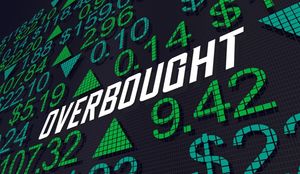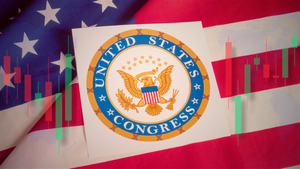
As of October 9, 2025, the global financial markets are witnessing a truly historic and unprecedented rally in silver, with the precious metal surging to levels not seen in decades. Breaking past the psychologically significant $50 per ounce mark, spot silver has touched an astounding $51.10 per ounce, marking a staggering 73.1% gain since the beginning of the year. This dramatic ascent is not merely a speculative frenzy but is underpinned by a powerful confluence of structural demand from the burgeoning green energy sector, persistent supply deficits, and a renewed investor appetite for tangible assets amidst an uncertain global economic landscape. The implications for investors, industries, and the broader financial system are profound, signaling a potential paradigm shift in how silver is perceived and valued.
This rally is reshaping investment portfolios and forcing a re-evaluation of asset allocations, as silver increasingly stands out as both an industrial powerhouse and a critical inflation hedge. Its outperformance against gold in percentage terms this year highlights its unique position, offering a blend of commodity-driven growth and safe-haven appeal. The market's immediate reaction has been a surge in investor interest, particularly in silver-backed Exchange Traded Funds (ETFs), and a prevailing "buy-the-dip" mentality, indicating strong conviction in silver's long-term trajectory.
The White Metal's Meteoric Rise: Driven by Green Tech and Scarcity
Silver's historic surge in 2025 is a multifaceted phenomenon, rooted deeply in fundamental shifts in global demand and persistent supply constraints. The white metal's price acceleration became particularly pronounced during the third quarter, culminating in its breach of the $50 barrier in early October. This level surpasses not only its 2011 peak of $49.51 but also the intraday record of $50.36 set during the infamous Hunt brothers' squeeze of 1980, establishing a new modern historical high.
At the core of this rally is the insatiable industrial demand, which now accounts for a significant majority (59%) of total silver usage. Silver is an indispensable component in the rapidly expanding green energy sector, particularly in solar panels, where its superior electrical conductivity is critical for photovoltaic cells. The ongoing global transition to cleaner energy sources means sustained and growing demand from this sector. Furthermore, silver's role in electric vehicles (EVs), 5G infrastructure, and advanced electronics continues to expand, solidifying its status as a critical industrial metal for the 21st century. This structural demand differentiates the current rally from past speculative surges.
Compounding this robust demand are persistent supply deficits. For the fifth consecutive year, global silver supply in 2025 is projected to fall short of demand by an estimated 21%. This tightness is exacerbated by declining ore grades in existing mines and a lack of significant new discoveries, making it challenging for supply to respond quickly to price increases, especially since approximately 73% of silver is produced as a byproduct of mining other metals like copper, lead, and zinc.
Beyond industrial fundamentals, macroeconomic factors are playing a crucial role. Anticipations of a dovish stance from the Federal Reserve, including potential interest rate cuts in late 2025 and 2026, have weakened the U.S. dollar, making dollar-denominated commodities more attractive to international buyers. Simultaneously, escalating geopolitical tensions, persistent inflation concerns, and broader economic uncertainties have amplified silver's appeal as a safe-haven asset and a hedge against currency debasement. The impressive performance of gold, which has also rallied to over $4,000 an ounce, has provided a strong tailwind for silver, with the white metal often amplifying gold's upward momentum.
Winners and Losers: Corporate Fortunes in a Soaring Silver Market
Silver's historic rally is creating a clear divergence in fortunes across various public companies, with primary silver producers poised for substantial gains, while industries heavily reliant on silver as an input face escalating costs.
Silver Mining Companies: The Clear Winners Companies engaged in silver mining and streaming are direct beneficiaries of soaring prices. Higher silver prices translate directly into enhanced revenue, expanded profit margins, and strengthened cash flows. This leverage effect means that a percentage increase in silver prices often leads to a disproportionately larger increase in a miner's profitability.
- Fresnillo Plc (LSE: FRES), the world's largest primary silver producer, is expected to see significant boosts from its high-yield Mexican operations.
- Pan American Silver Corp. (TSX: PAAS, NYSE: PAAS), with diversified operations across the Americas, is well-positioned to capitalize on increased prices and ongoing expansions.
- First Majestic Silver Corp. (NYSE: AG, TSX: AG), focused on Mexican and U.S. silver production, is seeing record output and stands to benefit substantially.
- Wheaton Precious Metals Corp. (NYSE: WPM), a precious metals streaming company, enjoys higher silver prices without the direct operational costs, ensuring consistent and expanding margins.
- MAG Silver Corp. (TSX: MAG, NYSEAMERICAN: MAG), with a significant stake in the high-grade Juanicipio mine, is experiencing strong performance.
Industrial Users: Facing Headwinds Conversely, industries that consume large quantities of silver as a raw material are grappling with significantly increased input costs, which can squeeze profit margins or necessitate price increases for end products.
- Solar Panel Manufacturers: Silver is a critical component in solar cells. Companies like First Solar (NASDAQ: FSLR), JinkoSolar Holding Co., Ltd. (NYSE: JKS), and Canadian Solar Inc. (NASDAQ: CSIQ) will face higher production costs, potentially impacting profitability or requiring product price adjustments.
- Electronics and Electrical Manufacturers: Silver's use in circuit boards, connectors, and advanced chips means tech giants such as Apple Inc. (NASDAQ: AAPL), Samsung Electronics Co., Ltd. (KRX: 005930), and Intel Corporation (NASDAQ: INTC) will contend with elevated material costs for their wide range of products.
- Electric Vehicle (EV) Manufacturers: EVs utilize substantial amounts of silver in their electrical systems and battery connections. Companies like Tesla, Inc. (NASDAQ: TSLA) and General Motors Company (NYSE: GM) will see increased manufacturing expenses, which could affect their pricing strategies and competitiveness in the rapidly evolving EV market.
- Jewelry Manufacturers and Retailers: Higher silver prices directly translate to increased costs for silver jewelry, potentially leading to reduced consumer demand and sales.
A Broader Significance: Green Revolution, Inflation, and Strategic Resources
Silver's historic rally in late 2025 is more than just a commodity price surge; it is a powerful indicator of broader, transformative trends sweeping across global industries and financial markets.
Firstly, the rally underscores the accelerating Green Energy Transition. Silver is not merely a precious metal but a critical industrial component for renewable energy technologies. Its indispensable role in solar photovoltaic (PV) panels, where demand is projected to soar, and its increasing use in electric vehicles (EVs) and green hydrogen production, firmly links its fortunes to the global push for decarbonization. This demand, driven by ambitious climate goals, represents a structural shift that differentiates the current rally from past speculative bubbles, suggesting a more sustainable long-term trajectory for silver's industrial value.
Secondly, the surge reflects heightened global concerns about inflation hedging and economic stability. In an era marked by persistent inflationary pressures, geopolitical tensions, and uncertainties surrounding fiat currencies, investors are increasingly turning to tangible assets like silver and gold to preserve wealth. Historically, silver has proven to be a potent hedge against inflation, notably during the stagflation of the 1970s. This renewed safe-haven appeal signals a potential loss of confidence in traditional financial instruments and a broader "debasement trade" underway across precious metals.
The ripple effects are extensive. For mining companies, higher prices translate to robust financial health, potentially spurring increased exploration and development. However, the inelastic nature of silver supply, with a large portion being a byproduct of other metal mining, means that output cannot be easily ramped up, exacerbating supply deficits. For industrial users, the rally presents significant challenges, forcing them to absorb higher costs, innovate in material usage (e.g., "thrifting" silver in solar cells), or explore substitution, though performance trade-offs often exist.
From a regulatory and policy perspective, a sustained rally could prompt governments to increase scrutiny on silver supply chains, potentially considering strategic reserves to secure supplies for critical green technologies. The volatility inherent in silver's relatively smaller market, as demonstrated by historical events like the Hunt Brothers' attempt to corner the market in 1980, also means regulators like the CFTC might increase monitoring to prevent market manipulation. ESG considerations in mining will also gain prominence as demand intensifies.
Historically, silver has experienced dramatic rallies. The 1979-1980 surge and the 2008-2011 rally both highlighted its volatility and sensitivity to economic uncertainty and speculative interest. However, the current rally, with its strong foundation in industrial demand from green technologies, suggests a more fundamentally driven and potentially sustainable upward trend compared to past episodes.
What Comes Next: Navigating a New Era for Silver
Following its historic rally to over $50 per ounce, silver is entering a new and dynamic phase, presenting both significant opportunities and challenges for investors and industries alike. The short-term outlook (late 2025 - early 2026) suggests continued volatility as the market undergoes price discovery at these elevated levels. While temporary pullbacks due to profit-taking are possible, the strong underlying fundamentals, including relentless industrial demand and persistent supply deficits, are expected to support a sustained bullish trend. Analysts anticipate silver will consolidate in the $50-$55 range before potentially testing higher resistance levels, with some forecasts suggesting a move towards $55-$75 per ounce in the coming months.
The long-term outlook (2026 and beyond) remains overwhelmingly bullish. Silver's integral role in the accelerating green energy transition (solar, EVs, 5G), coupled with enduring supply constraints, is expected to drive robust demand for decades. Many analysts project silver to continue its ascent, with ambitious forecasts ranging from $60-$80 per ounce in the near to medium term, and some even envisioning $100 or $250 per ounce in a prolonged bull market, especially when considering inflation-adjusted historical peaks.
Strategic Pivots and Adaptations:
- For Investors: Diversification into silver is becoming increasingly crucial. Investors should consider exposure through physical bullion, coins, or silver-backed ETFs (e.g., iShares Silver Trust (SLV), abrdn Physical Silver Shares ETF (SIVR)). Close monitoring of central bank policies, physical inventory levels, and industrial demand trends will be vital. Given silver's inherent volatility, risk management and a long-term perspective are paramount, viewing any dips as potential buying opportunities.
- For Industries: Industrial consumers of silver, particularly in solar, electronics, and automotive sectors, must adapt. This includes exploring hedging strategies, securing long-term supply contracts, and investing in "thrifting" technologies to reduce silver content per unit. Accelerated research into silver recycling from end-of-life products will also be critical.
- For Miners: Higher prices incentivize increased exploration and development. However, the capital-intensive and time-consuming nature of mining, coupled with silver often being a byproduct, means supply responses will be gradual.
Market Opportunities and Challenges: Opportunities abound in green technology companies, advanced electronics, recycling solutions, and silver mining equities. The rally is also attracting significant new investor interest. However, challenges include silver's pronounced price volatility, exacerbated supply shortages leading to higher costs for industrial users, and the potential for substitution if prices become prohibitive. A significant global economic slowdown or an unexpected hawkish shift in monetary policy could also temper demand and prices.
Potential Scenarios:
- Bullish Scenario ("Green Revolution" Driven): Sustained growth in green energy and technological advancements drives relentless industrial demand, coupled with persistent supply deficits and ongoing inflation concerns, propelling silver to new all-time highs, potentially well above $100.
- Bearish Scenario (Economic Contraction/Disinflation): A severe global economic downturn significantly curtails industrial demand, while rapid disinflation diminishes silver's appeal as an inflation hedge. Investor profit-taking and a stronger U.S. dollar could lead to sharp corrections, though strong underlying fundamentals might limit the downside in the long term.
Wrap-up: Silver's Enduring Significance in a Transforming World
Silver's historic rally in late 2025 represents a pivotal moment for the precious metals market and global industries. The key takeaway is that this surge is not a fleeting speculative bubble but a fundamentally driven ascent, deeply rooted in the accelerating green energy transition, persistent supply deficits, and silver's enduring role as a safe-haven asset amidst economic uncertainty. Its performance has significantly outpaced gold in percentage terms this year, underscoring its unique blend of industrial utility and investment appeal.
Moving forward, the silver market is poised for continued dynamism. While short-term volatility and potential corrections are a natural part of any significant rally, the long-term outlook remains overwhelmingly bullish. The structural demand from solar panels, electric vehicles, and other high-tech applications ensures a robust floor for prices, while the challenges in increasing mining supply suggest that deficits will likely persist.
The lasting impact of this rally will be a recalibration of silver's perceived value, elevating its status from merely a precious metal to a strategic industrial resource critical for the future. For investors, this means silver is no longer a peripheral asset but a core component of a diversified portfolio, offering exposure to both technological growth and inflation protection. What investors should watch for in the coming months includes any shifts in global monetary policy, particularly from the Federal Reserve, the pace of green energy adoption and related industrial demand figures, and any significant developments in mining supply or recycling technologies. Geopolitical events and broader inflation trends will also continue to exert a strong influence.
This content is intended for informational purposes only and is not financial advice






